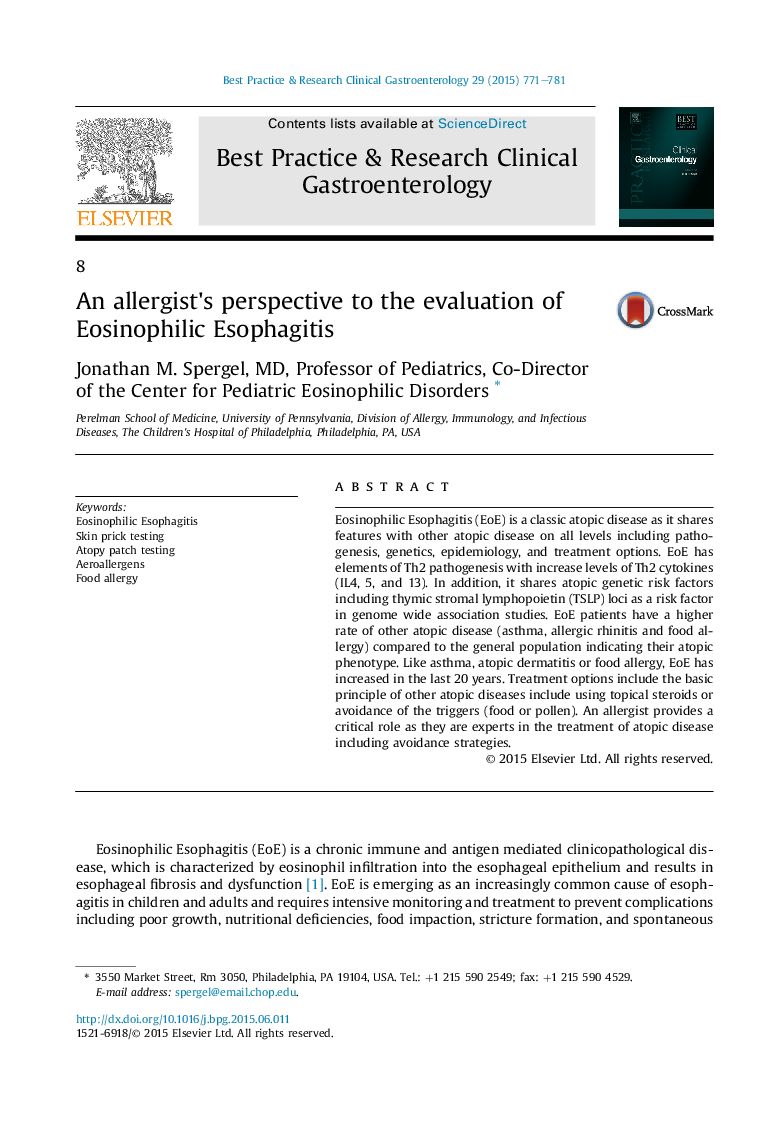| Article ID | Journal | Published Year | Pages | File Type |
|---|---|---|---|---|
| 3254056 | Best Practice & Research Clinical Gastroenterology | 2015 | 11 Pages |
Eosinophilic Esophagitis (EoE) is a classic atopic disease as it shares features with other atopic disease on all levels including pathogenesis, genetics, epidemiology, and treatment options. EoE has elements of Th2 pathogenesis with increase levels of Th2 cytokines (IL4, 5, and 13). In addition, it shares atopic genetic risk factors including thymic stromal lymphopoietin (TSLP) loci as a risk factor in genome wide association studies. EoE patients have a higher rate of other atopic disease (asthma, allergic rhinitis and food allergy) compared to the general population indicating their atopic phenotype. Like asthma, atopic dermatitis or food allergy, EoE has increased in the last 20 years. Treatment options include the basic principle of other atopic diseases include using topical steroids or avoidance of the triggers (food or pollen). An allergist provides a critical role as they are experts in the treatment of atopic disease including avoidance strategies.
